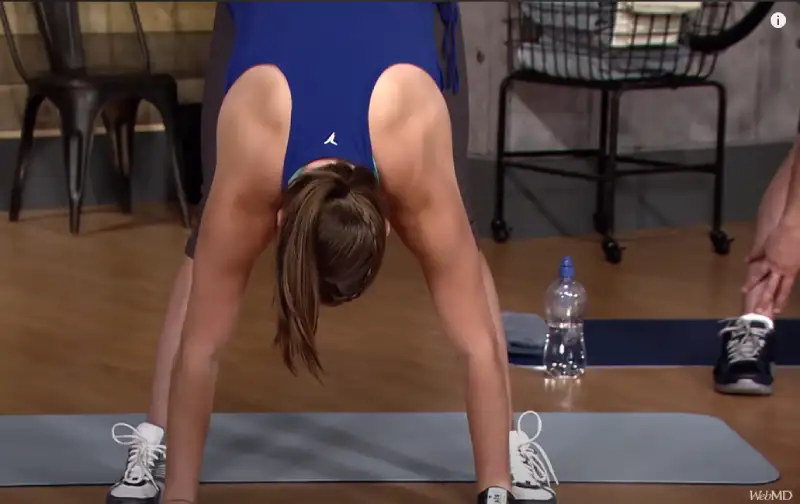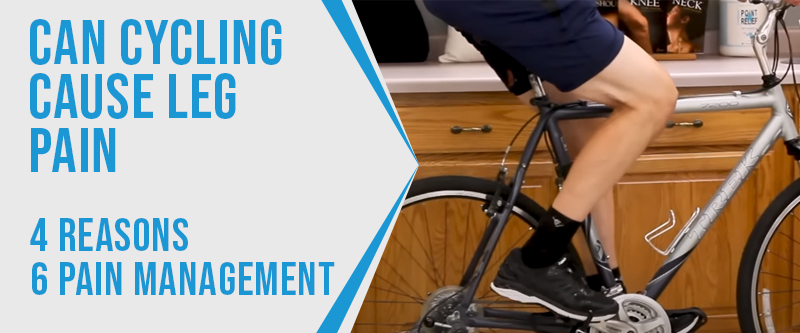Leg pain is a symptom that can stem from various causes. Most leg pain arises from wear and tear or excessive use. Injuries or diseases of joints, bones, muscles, ligaments, tendons, nerves, or soft tissues can also cause it. Certain types of leg pain can be linked to issues in the lower spine.
Yes, cycling can cause leg pain. When the muscle used in cycling becomes shortened and weakened, it can pressure the sciatic nerve, leading to pain or numbness down the leg or in the hip. This is a common cause of sciatica.
We’ll explore the causes of leg pain in cycling, specific related terms, and effective prevention and management strategies.
Can Cycling Cause Leg Pain? 6 Triggers & Recovery Hacks

Some cyclists may experience leg pain, a frustrating and debilitating condition affecting performance and enjoyment. We will explore the many factors contributing to leg pain in cycling and the pain cyclists may experience.
Causes of Leg Pain in Cycling
To understand the causes of leg pain in cycling, it is essential to look at the underlying physiological factors that can contribute to this issue. Some factors that may cause leg pain during cycling include:
- Muscle fatigue: Cycling involves prolonged use of leg muscles, leading to exhaustion and soreness. When muscles are tired, they are more susceptible to cramps and strains.
- Oxygen depletion: Cycling requires a lot of energy, and the muscles need a constant supply of oxygen to generate this energy. When there is insufficient oxygen, the forces can become tired and sore.
- Lactic acid buildup: Lactic acid is a by-product of muscle energy production. When the amount of lactic acid exceeds the muscle’s capacity to clear it, it can lead to muscle soreness and fatigue.
- Inflammation: Cycling involves repetitive muscle contractions, which can cause inflammation and leg pain.
Types of Leg Pain in Cycling:
Leg pain in cycling can take different forms, depending on its cause and severity. Some of the most common types include:
- Muscle soreness: This is a common type of leg pain that results from a build-up of lactic acid in the muscles during exercise. It typically affects large muscle groups, such as the thighs, leading to a burning sensation and discomfort lasting for a few hours or days after cycling.
- Cramps: Cycling cramps are sudden, involuntary muscle contractions in any part of the leg, but most commonly in the calf. Dehydration, electrolyte imbalances, and muscle fatigue can cause them.
- Strains: Leg strains are injuries when muscle fibers are stretched or torn beyond their capacity. This type of pain occurs suddenly and can be severe. Cyclists may experience strains in their hamstrings, quadriceps, or other leg muscles depending on the injury. Muscle strain can cause sore calves also..
- Injuries: Leg pain can also result from more severe injuries, such as fractures, dislocations, or ligament tears. These damages require medical attention and may prevent cyclists from riding for an extended period.
Leg Pain Caused By Cycling: A Specific Term
One term often associated with leg pain after cycling is lateral knee pain. We will explore this term, its relationship to leg pain, and practical suggestions to prevent and manage lateral knee pain.
The Mechanics and Pathology of Lateral Knee Pain
Lateral knee pain is pain felt on the outside of the knee joint. It is often caused by an inflammation of the iliotibial band (ITB) that runs from the hip to the shin along the outside of the thigh. The ITB is crucial in stabilizing the knee and hip during movement.
The ITB slides back and forth over the lateral epicondyle, a bony bump on the outside of the knee, which can lead to friction and irritation. This condition is called iliotibial band syndrome (ITBS) and is one of the primary causes of lateral knee pain in cyclists. When the ITB is tight or overused, it can pull on the lateral epicondyle, causing inflammation and discomfort.
Triggers and Risk Factors for Lateral Knee Pain in Cycling
Several factors can trigger lateral knee pain in cycling, including:
- Poor bike fit: Having a saddle that is too high or too far back or a cleat that is too far inward can cause your foot to point outward, leading to increased tension on the ITB.
- Low cadence: Pedaling at a low tempo can put more stress on the ITB and cause lateral knee pain.
- Overuse: Increasing your mileage or intensity too quickly can contribute to ITBS by not giving your ITB enough time to adapt to the new demands.
- Weak or imbalanced muscles: Weak or imbalanced muscles in your hip, thigh, or core can cause poor alignment and posture, leading to increased stress on the ITB.
Leg Pain From Cycling: Pain Management

Leg pain is one of the cyclist’s most common issues, and various factors cause it. We will examine the practical strategies and measures that can be taken to prevent and manage leg pain in cycling.
Pre-Ride Preparation
Proper warm-up exercises, stretching, and mobility routines are crucial to prepare your body. Here are some activities to maintain leg health:
- Dynamic warm-up exercises like lunges, high knees, and leg swings.
- Stationary cycling to warm up.
- Lower body strength exercises like squats and lunges.
- Stretching the quads, hamstrings, and calves.
- Foam rolling to release knots.
Proper Equipment Selection
Choose the right bike size, ensure proper bike seat change, and use padded cycling shorts and cycling shoes with cleats for good power transfer.
Optimal Cycling Posture
Poor cycling posture causing inner thigh pain is often due to excessive forward lean, which can bruise the groin from pressure on delicate tissues. Maintain an optimal posture during cycling:
- Relax your shoulders and keep them down.
- Bend elbows toward the body.
- Align hips with the pedals.
- Align knees with feet and allow slight bending.
Post-Ride Recovery
Proper recovery reduces soreness, fatigue, and the risk of injury. Consider these activities:
- Cool-down exercises like low-intensity cycling.
- Stretching leg muscles.
- Hydration with water or electrolyte-rich fluids.
- Sufficient rest and sleep for tissue recovery.
Role of Nutrition, Hydration, and Rest
Maintain proper hydration, nutrition, and rest for optimal muscle function and overall health:
- Drink plenty of water before, during, and after cycling.
- Eat balanced, nutritious meals.
- Avoid overstraining and give muscles time to heal.
A Technological Advance In Cycling Gear
Explore pain relief and prevent advancements, such as vibration-absorbing handlebars, custom insoles, compression stockings, nerve stimulation devices, and heat therapy or ice massage for muscle soothing.
Conclusion
Cycling is an excellent way to stay fit and enjoy the outdoors, but it can also lead to leg pain. By understanding the causes of leg pain in cycling and following effective prevention and management strategies, you can enjoy your ride pain-free.
With the tips and advice provided in this guide, we hope you can confidently continue to pursue this rewarding and beneficial activity. Remember to implement the recommendations actively, seek professional help, and always listen to your body.
FAQs
How Does Cycling Affect Your Legs?
Consistent cycling can contribute to leaner, more sculpted legs. You’ll observe reduced leg fat when you regularly cycle, resulting in well-defined leg muscles. Just like any other aerobic activity, cycling enhances your leg muscles.
Why Do My Legs Hurt After Cycling?
Leg pain after cycling is commonly caused by muscle fatigue. Other reasons include overuse of muscles and improper bike fit. Rest, proper stretching, and gradually increasing cycling intensity can help alleviate the discomfort.
Is Cycling Causing Sore Legs?
Yes, sore legs from cycling can be caused by the repetitive use of muscles like calves, glutes, and quads, leading to fatigue and lactic acid build-up. Increased lactic acid production can result in temporary pain during the cycling session.
Are Your Legs Sore After Cycling?
Yes, it’s normal for your legs to feel sore after cycling. This achy sensation, known as delayed onset muscle soreness, can occur 24 to 48 hours after your ride. The exact cause of this post-exercise soreness is still not fully understood.


